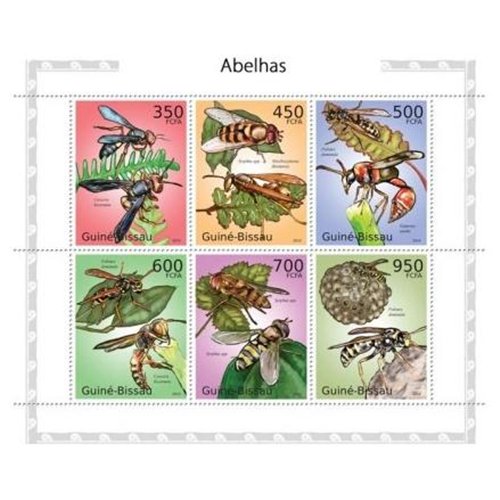The European Food Safety Authority (EFSA) has published a review of the risks posed by pesticides to honey bees, bumble bees and solitary bees (attached). EFSA has acknowledged enormous shortcomings and lacks of the actual risk assessment scheme: disorientation, larvae toxicity and long-term effects of pesticides are not evaluated before authorization is granted. All pesticides that are in use in the European Union have thus been authorized without any correct assessment and may thus be highly toxic for honeybees and other pollinators. Considering EFSA’s acknowledgment on the weakness of the assessment scheme of pesticides risks to bees and the increasing number of articles pointing at neonicotinoids and phenylpyrazoles as main culprits in honeybees disappearing, Pesticide Action Network (PAN) Europe and the European Beekeeping Coordination (EBC) demand an immediate ban on these molecules by the European Commission.
The document proposes two separate assessment schemes: one for honey bees, and one for bumble bees and solitary bees. In the initial stage it is suggested to include toxicity testing that covers an exposure period of seven to ten days for adult bees and larvae. Both life stages can involve exposure of longer than one day, a risk that is not covered by standard tests.
EFSA’s pesticides experts also recommend improvements to existing laboratory, semi-field (cages, tunnels and tents) and field testing procedures. Several exposure routes (intermittent and prolonged exposure of adult bees, exposure through inhalation and the exposure of larvae) are not currently evaluated in laboratory tests, and the effects of “sub-lethal” doses of pesticides are not covered fully.
In field and semi-field testing, the experts identify several weaknesses that lead to uncertainties in the actual exposure of honeybees. They highlight the need to improve the methods for detecting bee mortality, the observation of sub-lethal effects and the statistical analysis of test results.
EFSA opinion on laboratory tests:
At the moment, the EU risk assessment of pesticides on bees includes the determination of oral and contact acute toxicity (LD50) of adult honey bees (Apis mellifera) following EPPO guidelines 170 and OECD 213 and 214. Several sources of variation of this parameter have been identified. However, potential effects on non-Apis bees have never been evaluated before. Several exposure routes of pesticides are not evaluated in laboratory conditions: the intermittent and prolonged exposure of adult bees, exposure through inhalation and the exposure of larvae. Likewise, the effects of sub-lethal doses of pesticides are not evaluated in conventional testing for now. Consequently, it is recommended to include in first tier: chronic toxicity tests on adult bees, a laboratory larval toxicity test, and precise observations of sub-lethal effects. Ultimately specific tests aimed at evaluating sub-lethal effects should be adopted in the first tier of testing. Some examples have been identified in this opinion: Proboscis Extension Reflex, homing flight or Bombus microcolonies. Several points for further research have been identified.
EFSA opinion on semi-field tests:
Semi-field testing (cage, tunnel or tent tests) are currently conducted following three test guidelines: the EPPO 170 (4), the OECD 75 brood guidance document (OECD, 2007), and the Oomen et al. (1992) test. Several weaknesses have been identified for each of these guidance documents, e.g. the limited size of crop area, the impossibility to evaluate all the possible exposure routes of the systemic compounds used as seed- and soil-treatments (SSST), the limited potential to extrapolate the findings on larger colony sizes used in field studies or the relatively short timescale (one brood cycle). It is recommended to add the current state of scientific knowledge on a number of issues to the existing guidelines (e.g. more detailed description and categorization of behavioural assessments, investigation of sub-lethal and delayed effects, etc.) and to develop methodologies adapted to pesticides applied as SSST, including potential risks (e.g. for dust drift and guttation). Consideration should be given to extending studies where significant exposure is likely to occur over a long period. Results should be analysed with appropriate statistical methods.
EFSA opinion on field tests:
Field testing currently follows only one test guideline, the EPPO 170 (4). A precise analysis of this guideline, based on scientific knowledge, showed that it has several major weaknesses (e.g. the small size of the colonies, the very small distance between the hives and the treated field, the very low surface of the test field), leading to uncertainties concerning the real exposure of the honey bees. Even when they are carried out in natural conditions, they may not represent the normal exposure conditions of the bee colonies. Furthermore this guideline is better suited to the assessment of spray products than to that of SSST. For the moment, it does not allow us to assess all the effects of pesticides on the scale of the colony, including all bee categories and relevant long-term effects. It is therefore important and urgent to adapt guidelines to a specific mode of pesticide application and to the relevant exposure routes.
Attached is an article on the influence of Bayer Cropscience on Dutch policy makers (which appeared in the magazine "Vrij Nederland" on April 4, 2012).
Sources:
http://www.efsa.europa.eu/en/press/news/120523a.htm
http://www.pan-europe.info/News/PR/120606.html

- Log in to post comments
